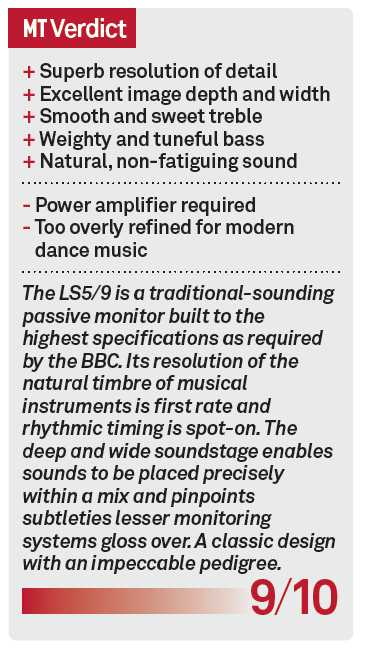Graham Audio LS5/9 Monitors Review
It seems that all classic gear gets a revamp at some point, and now it’s the turn of these monitors plucked from the BBC’s vaults. John Pickford listens closely (without Mother)… Details Price £3,450 (cherry or studio-black finish) Contact 01626 361168 Web www.grahamaudio.co.uk Amazon.co.uk Widgets Much of the studio hardware we review these days is based […]
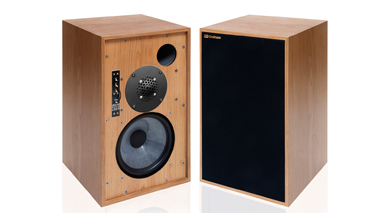
It seems that all classic gear gets a revamp at some point, and now it’s the turn of these monitors plucked from the BBC’s vaults. John Pickford listens closely (without Mother)…
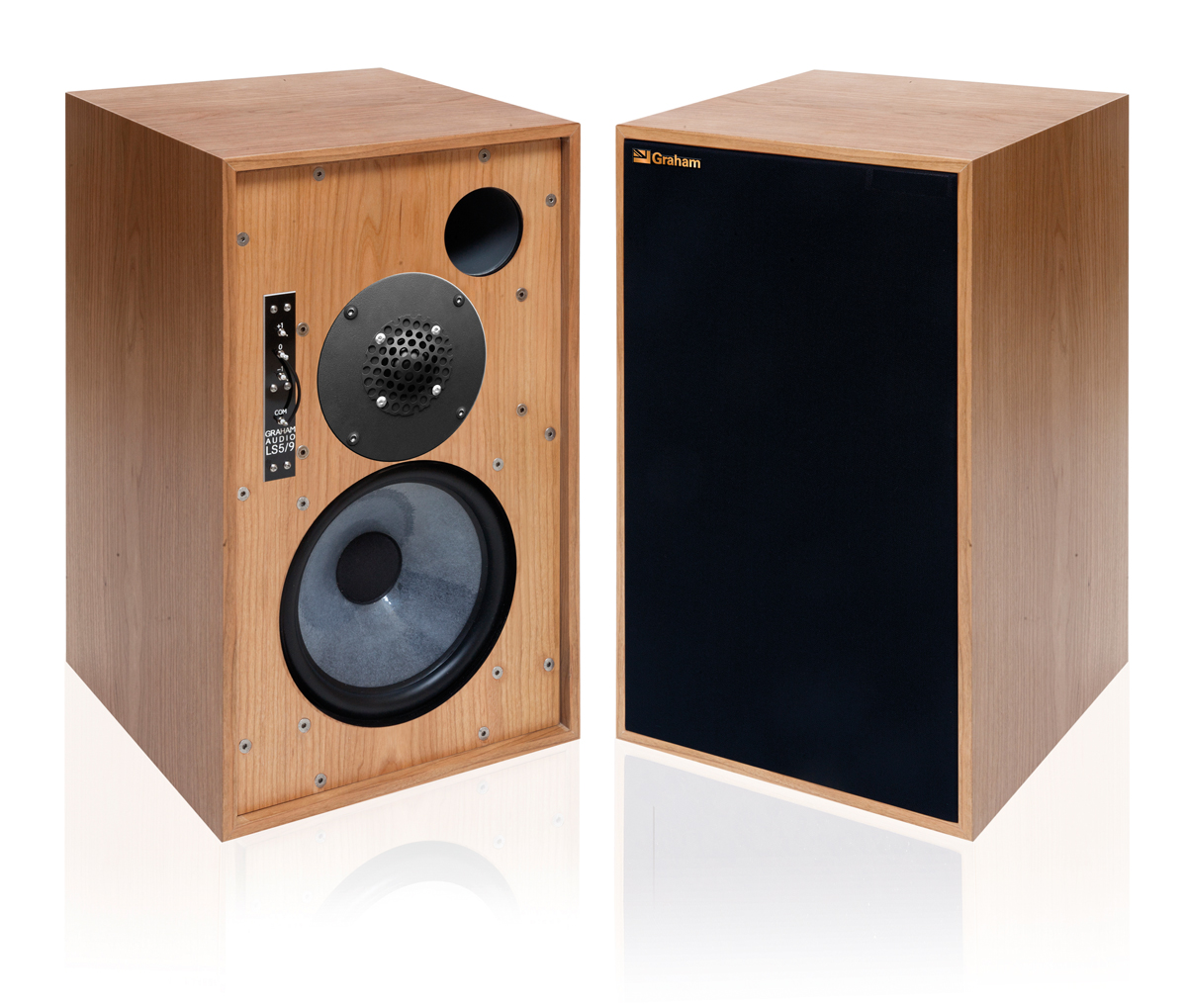

Details
Price £3,450 (cherry or studio-black finish)
Contact 01626 361168
Web www.grahamaudio.co.uk
Much of the studio hardware we review these days is based on or inspired by classic designs. The exception to this trend is studio monitors, most of which now appear as active designs with built-in amplification. But Graham Audio is bucking the trend by revisiting a BBC-designed passive monitor from the early 1980s.
The LS5/9 was the last of the great monitors to come from the BBC Research Department. The beeb never manufactured its own designs, instead granting licenses to various loudspeaker companies. Graham Audio now has the much-coveted license to build the LS5/9 to the BBC’s specs, and the result is a high-grade monitor that is quite different from the vast majority of the competition. Critical to the development of the new LS5/9 was the involvement of Derek Hughes, son of Spencer Hughes who was a key figure in the BBC’s Research Department during its heyday.
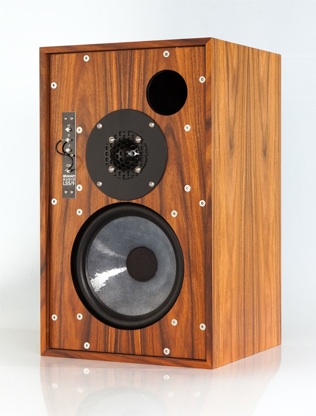
While the original 34mm Audax tweeter is still manufactured, the original Rogers mid/bass driver is no longer available. Derek worked with respected driver manufacturer Volt to produce a close copy of the original 200mm polypropylene unit along with a revised crossover in order to re-create the authentic sound.
Like all the classic BBC designs, the cabinet is a thin-wall construction made from birch plywood; however, rather that using foam internal damping, Graham Audio uses medium density rock-wool slabs.
Unlike most modern monitors, the LS5/9s come with a cloth grille that is designed to be left in place, and this is secured with neodymium magnets rather than the Velcro used in original units. Removing the grilles reveals a veneered front baffle featuring a bass-reflex port along with a factory-set adjustment panel that finely tunes the response of the tweeter unit.
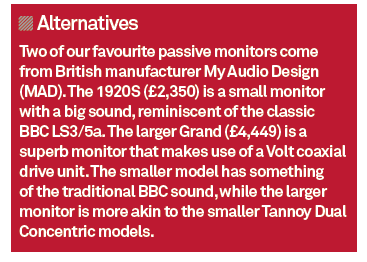
On Air
On first listen, the overall sound was quite different from the usual presentation offered by modern monitoring systems. Most of the current crop of quality mid-sized monitors display similar characteristics, namely a bright, explicit sound with lightning-fast transients hammering home a torrent of unforgiving detail. The LS5/9s take a somewhat gentler, smoother approach.
That’s not to say that they are dull or lack detail, rather they invite you to listen in to a wide and deep soundstage instead of firing audio at you relentlessly.
While the treble response isn’t as obvious as that in many monitors it is smooth and sweet, preserving the natural timbre of voices and instruments. The bass response is warm and weighty, sounding like a much bigger speaker.
The real heart of this monitor, though, is the broad midrange, which offers superior resolution of fine detail, highlighting subtleties within the mix. Naturally-recorded sounds such as piano and strings sound correct, and voices are reproduced convincingly. The LS5/9s are particularly good at revealing micro-dynamics – the slight changes in level that occur within a particular performance. Best of all, the midrange integrates with both the top and bottom end seamlessly.
Having worked with original LS5/9s in the past, it’s clear that Graham Audio has got its new revision absolutely right. They sing with all types of music, although their unforced nature will probably appeal more to those who are primarily involved with acoustic-based music rather than electronica.
